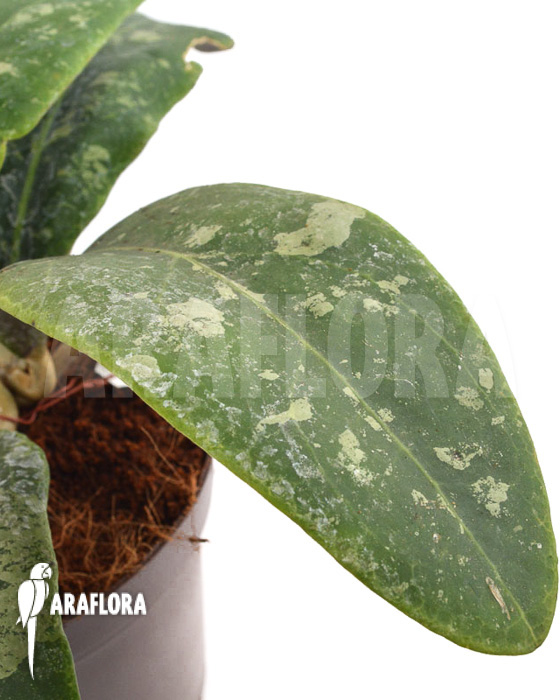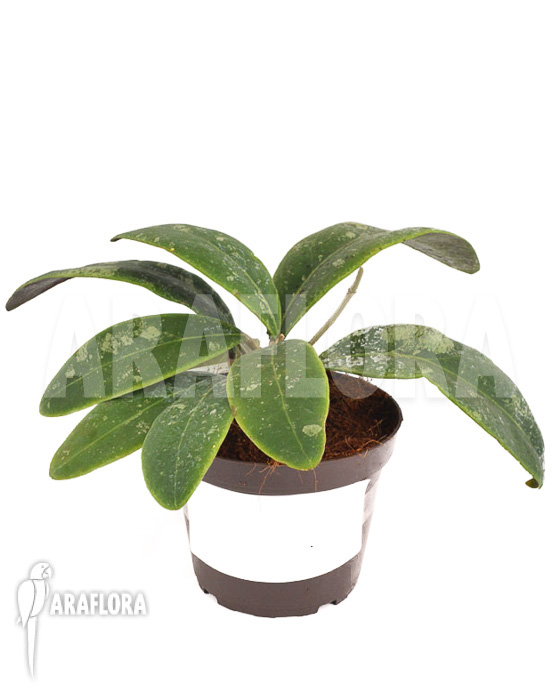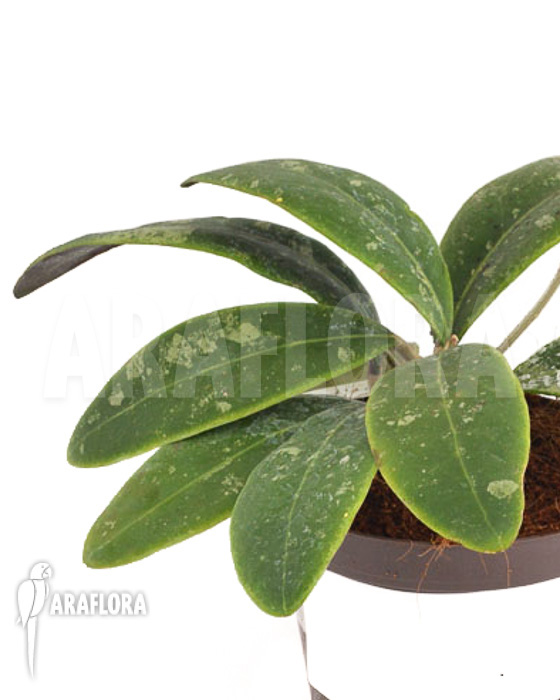Hoya aff Rintzii Borneo H1 'leafcutting' - Hoya22a
Hoya aff Rintzii Borneo H1 'leafcutting' - Hoya22a
This Hoya is a very uncommon species to come across, as it was only described as a species in 2014. Hoya rintzii originates from the rainforests of Borneo and peninsular Malaysia. This plant has beautifully speckled leaves and can grow spectacular umbels of flowers with the right care.
Currently not in stock
€ 0,00
Keep me up to date?
Araflora will inform you as soon as the product is available again. Please fill in your e-mail address and we will let you know as soon as the product is back in stock. You will get an e-mail message when the product is available again. Unfortunately we cannot say how long this will be or what the price is likely to be.

Receive an e-mail when new stock of this plant arrives.
Share this plant? Press on one of the following icons.
This unique Hoya is taxonomically related to the more common Hoya mindorensis and Hoya erythrostemma. One of the main differences with these plants is that Hoya rintzii has very pronounced speckling on its leaves, making this plant a sight to behold even when it’s not flowering. With proper care this plant can flower with numerous umbels full of white or pink flowers. The flowers grow on a perennial stalk called a peduncle. When the plant is done flowering, it can reflower from the same point, so never cut off a peduncle!


This exotic houseplant is not very demanding. It will grow well in a bright room with plenty of indirect sunlight. Try to avoid direct direct sunlight during the afternoons and in summer, as too much direct light can burn the leaves. Room temperatures (between 15⁰C and 30⁰C) will be fine for this Hoya, but you will notice that it will really thrive in summer, when the temperatures are usually above 20⁰C. This tropical species will appreciate higher levels of humidity, but will survive even in relatively dry winter conditions. Although this species likes it warm, it is recommended to not keep this plant close to an active radiator or central heating because of the dry air. As this is an epiphytic species it does not need to be watered very often and it prefers to have its soil dried out before watering. In terms of soil, this plant will do well in a well-draining mix composed of bark, perlite and regular peat-based soil. Eventually this tropical Hoya can grow long branches that will try to climb on to anything it comes across. It is recommended to use a sturdy trellis to guide the new vines.







 10 cm
10 cm
 10 cm
10 cm












